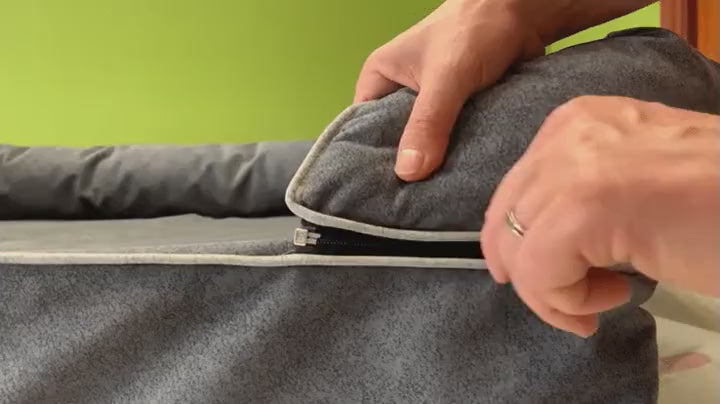Why is my dog's hair falling out? Surely you've wondered at some point. Shedding is a totally normal phenomenon, and it is usually recommended that owners help our dogs while they are shedding their fur. Next, we are going to see when dogs shed, how long a dog sheds, what we can do during molting and what peculiarities this physiological process presents.
When do dogs shed and how much? does it last?
Shedding is a natural process that usually occurs twice a year and whose purpose is to adjust the degree of protection of the dog's coat in the face of seasonal changes. As you know, in the animal kingdom the four seasons are not distinguished, and these changes are limited to "cold season / hot season".
This means that the dog will lose hair before summer to be cooler during the hottest months of the year, and will lose it again shortly before winter , so that the new (more abundant) fur protects it against low temperatures. In the months of April and October it is usual for the hair to shed.
However, this cadence is not usually so exact in dogs that live in cities, as they could be shedding hair throughout the year. Since they are usually more protected from sudden changes in temperature, they do not usually need to make complete changes, unlike dogs whose habitat is rural areas.
What the changes of skin do have in common is the duration: it is normal for a dog to shed its coat in a period between 1 and 2 months. However, there are factors that alter this rhythm, such as the type of hair, race, diet or brushing, which could shorten these periods. But in general, domestic dogs can be shedding for most of the year.
Care during shedding
Brushing
We recommend brushing the dog's coat to help you remove dead hair and make it cleaner and more comfortable. Otherwise, our best friend will shed large amounts of hair throughout the house during its moulting season.
Brushing short, shaggy hair should be done with short, elastic brushes, rubbing vigorously; For long-haired dogs, it is advisable to use metal brushes and rub more gently.
Baths
By supporting brushing with baths we will be able to remove the remains of dead hair and avoid the proliferation of knots and tangles , something very annoying (and not very hygienic). However, it is not recommended to abuse the baths, but try to make them coincide with the times when the dog is losing more hair.
We also recommend using specific shampoos with an adequate pH, and never wash them with our gels or shampoos because we could cause skin irritations.
Deworming
The big problem with shedding comes when the dead hair is still next to the new one and does not come off the dog's skin : this is when there is a risk of parasites adhering to your pet's fur.
In these cases we recommend supporting brushing, bathing and the administration of pipettes with an anti-parasite mattress , like the balukaDREAM that we sell in baluka.
Food
The quality of the feed that you give your dog will be determining factor for the good condition of its coat. It is highly recommended that you consult your veterinarian's opinion on what your dog should eat while he is in the process of shedding.
In general, a diet rich in omega-3 and omega-6 will favor the growth of hair in dogs with more shine and, therefore, with more health.
Differences in shedding according to hair type
Short hair
Short hair is considered to be hair whose length ranges between 1 and 4 cm ; short hair is normally straight, and is typical of chihuahuas, labradors, pitbulls , boxers or dachshunds Baths every six weeks, and brushing are usually sufficient weekly.
Long hair
Long hair is hair whose length is greater than 4 cm ; it is common to find it in the golden retriever , the border collie or the Yorkshire terrier . Normally, the shedding of these breeds lasts all year . Brushing, therefore, should be very frequent (between three and four times a week) to prevent too frequent baths (twice a year is recommended).
Coarse hair
Coarse hair is longer than 10 cm and is noticeably thick. It is typical of schnauzer . Here, daily brushing and monthly bathing are recommended.
Curly hair
Curly hair, in addition to being long and thick, grows with much faster than the rest of the coats; it is typical of the bichon frisé or the poodle . In these cases we also recommend that you brush your dog every day and bathe him a couple of times a month.
Now that you know when dogs shed dogs, we recommend you take note of the brushing and washing recommendations, and keep your home in the most hygienic conditions possible, especially the area where your dog spends the most time: his bed.
If you want to get rid of your dog's hair in his bed, take a look at our balukaDREAM mattresses, specially designed so that your dog's hair does not get stuck in the fabric, so it will be as easy as passing your hand or a brush to remove them, guaranteed.














